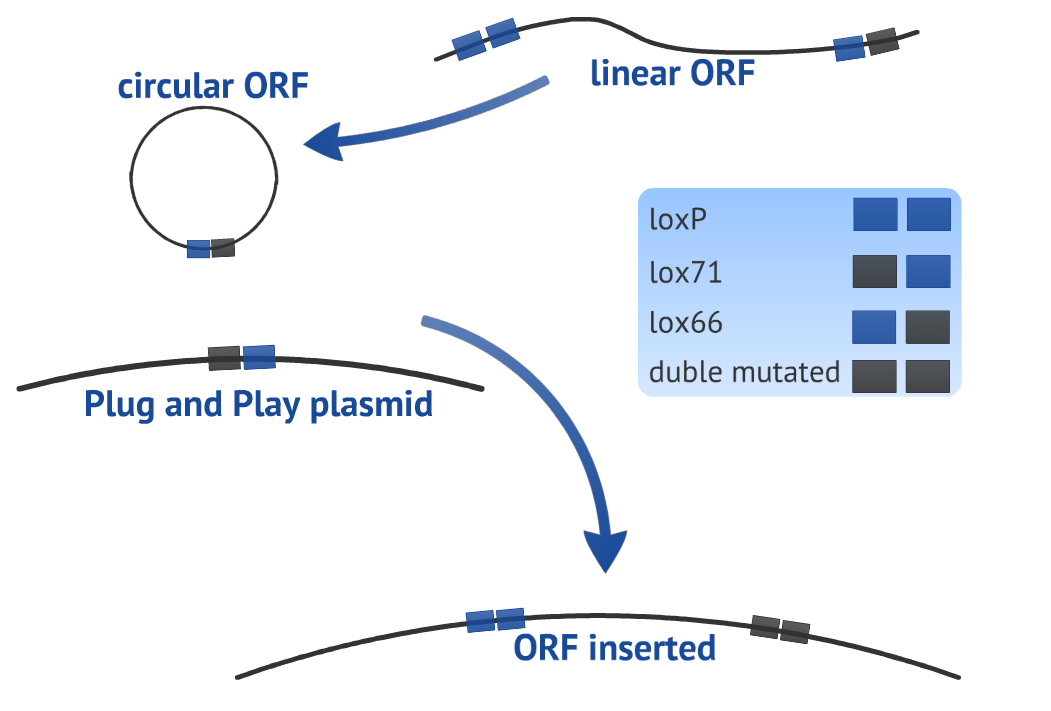Team:USP-UNESP-Brazil/Plasmid Plug n Play/Introduction
From 2012.igem.org
Andresochoa (Talk | contribs) |
|||
| Line 1: | Line 1: | ||
| + | {{:Team:USP-UNESP-Brazil/Templates/Header}} | ||
| + | |||
This project goal is to build a machine for producing proteins (called Plug & Play). This machine will be a tool for rapid protein expression, which would decrease the time used in screening candidate genes that could encode proteins with functions of biological interest. It only uses parts found in the Registry of Standard Biological Parts created by the iGEM competition, allowing its free use by the synthetic biology community. | This project goal is to build a machine for producing proteins (called Plug & Play). This machine will be a tool for rapid protein expression, which would decrease the time used in screening candidate genes that could encode proteins with functions of biological interest. It only uses parts found in the Registry of Standard Biological Parts created by the iGEM competition, allowing its free use by the synthetic biology community. | ||
| Line 11: | Line 13: | ||
| - | + | {{:Team:USP-UNESP-Brazil/Templates/RImage | image=ORFinsertion.png | caption=ORF insertion in Plug&Play plasmid | size=600px}} | |
| Line 18: | Line 20: | ||
The Cre expression levels are critical for the system performance, for this reason we created an A (Cre-Lox71) and B (Lox71-Cre) versions of the three plasmid constructions. We wanted to test if the target gene insertion upstream or downstream the Cre gene, into the receptor plasmid, could affect the efficiency of the expression. | The Cre expression levels are critical for the system performance, for this reason we created an A (Cre-Lox71) and B (Lox71-Cre) versions of the three plasmid constructions. We wanted to test if the target gene insertion upstream or downstream the Cre gene, into the receptor plasmid, could affect the efficiency of the expression. | ||
| + | |||
| + | {{:Team:USP-UNESP-Brazil/Templates/Header}} | ||
Revision as of 15:46, 20 September 2012
 Introduction
Introduction Project Overview
Project Overview Plasmid Plug&Play
Plasmid Plug&Play Associative Memory
Associative MemoryNetwork
 Extras
ExtrasThis project goal is to build a machine for producing proteins (called Plug & Play). This machine will be a tool for rapid protein expression, which would decrease the time used in screening candidate genes that could encode proteins with functions of biological interest. It only uses parts found in the Registry of Standard Biological Parts created by the iGEM competition, allowing its free use by the synthetic biology community.
As a proof of concept we proposed to build a single plasmid that allows any protein in E. coli expression in two steps: PCR (Polymerase Chain Reaction) and transformation. The system is based on the Cre recombinase protein that catalyzes DNA recombination between specific sites.
The Plug & Play system has two parts;
i) primers for amplifying the desired ORF (open reading frame) flanked by the recombination sequences loxP and lox66, recognized by the Cre recombinase.
ii) a receptor plasmid that uses the Cre recombination mechanism to insert the sequence amplified by PCR in a specific place (lox71 site), which already posses all the necessary machinery to express the protein.
We designed three plasmid versions to be tested; one using a low copy number plasmid (pSB4A5), one using a high copy number plasmid (pSB1C3) and one using a commercial high copy number plasmid (pGEM). These versions allow us to compare which could be the best system for developing this technology.
The Cre expression levels are critical for the system performance, for this reason we created an A (Cre-Lox71) and B (Lox71-Cre) versions of the three plasmid constructions. We wanted to test if the target gene insertion upstream or downstream the Cre gene, into the receptor plasmid, could affect the efficiency of the expression.
 Introduction
Introduction Project Overview
Project Overview Plasmid Plug&Play
Plasmid Plug&Play Associative Memory
Associative MemoryNetwork
 Extras
Extras "
"







